 inter-art, media, video, poetry, calligraphy, storytelling, performance, sign language
inter-art, media, video, poetry, calligraphy, storytelling, performance, sign language
| .. |
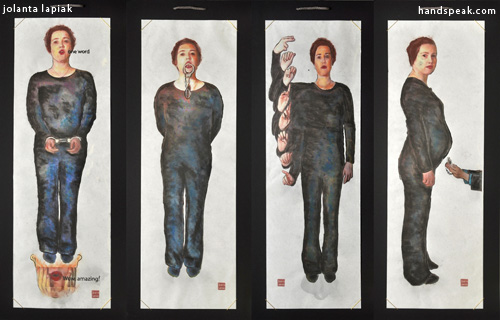
Jolanta Lapiak, Ameslan literary artist
Mixed media, 2010.
Ottawa, Canada.
This work was part of the group exhibition "Perceptions" from December 3, 2010 to January 16, 2011 at City Hall Art Gallery Ottawa City Hall, Canada. Mixed media, each panel: 101.6 cm x 40.6 cm
The work of art was created for an exhibition on the reinterpretation of a work of "Mille et une Nuits" by Shahla Bahrami from the City of Ottawa's Fine Art Collection.
The artist statement in both ASL (American Sign Language) and English are available below.
The title "Two Thousands and One Years" refers to the mainstream logocentric thinking since the Aristotlean or the ancient Greek days until the years literary deconstructionist Derrida dismantled philosophy that is underlying in phonocentrism, a superior thinking that speech is central to language.
The images in these panels weave within the theme of lingual violence, oppression, and dominance of phonocentrism that is rampant within society. To experience this psychological perception, phonocentrism and linguicism must be dismantled within a viewer's mentality.
The images in black and white using a human body represent textuality. Rather than focusing on the physical aspect of perception, this work is also about a psychological perception through language and modality.
Below describes each of the original panels from left to right (the exhibited work was incomplete):
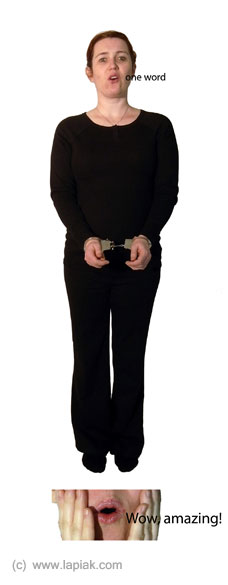
Panel 1: In the image, the person stands with the handcuffed hands. Coming out of the person's red mouth scribes in small size, "a single word." Just for one word, hearing people applaude loudly.
It represents linguicism and phonocentrism; that is, when a child fluently articulates a full-fledged narrative for their age in American Sign Language (or any signed language), she/he is not recognized. Whereas, a child who practices speech for years and accomplishes a few spoken words, she/he is given a big applause by excited hearing persons.
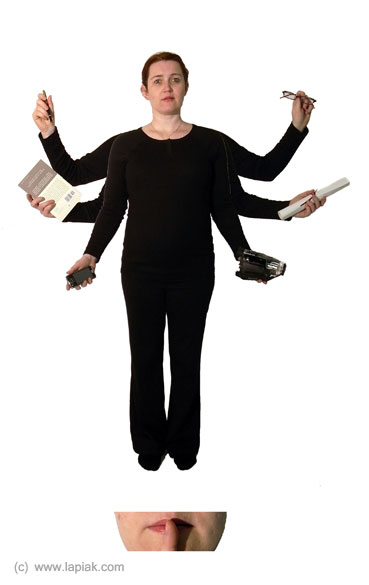
This image, originally to be part of the panels, was excluded in the exhibition.
In the image, the person stands with multiple arms and hands like a Hindu statue. Each hand holds some kind of an object, such as a college degree, a pen, a book, a camcorder, a texting-based cellphone, and eyeglasses. These objects represent a successful and well-developed career/profession through a signed language in the same way any people do in their own spoken languages.
Yet, a little image below shows a red lip of silence. It represents that a hearing people deny an acknowledgement of signing people's prosperity, education, career, and success.
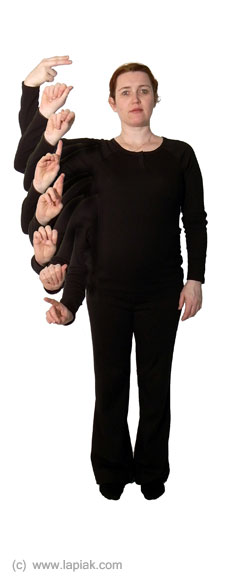
Panel 3: In the image, her right-handed multiple hands spells out a sequence of the manual alphabetical letters, "H-A-N-D-R-E-A-D".
Hearing people sometimes typically ask eyeing people, "Can you lipread?" This question implies their expectation of the eyeing people to fit into their hearing world and learn their language in speech to meet their needs. It is a symbol of superiority.
Instead, asking "Can you handread?" empowers ASL speakers of their language and culture as well as respect for themselves.
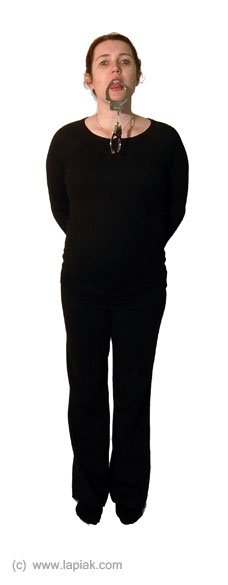
In the panel, her red tongue protrudes out, hanging a silver handcuff. The hands are invisible, behind her back.
One can literally cut off another person's tongue by hands. But, not the way around. Yet, hearing people have the ability to oppress eyeing people's hands by tongue, figuratively and symbolically. How can a tongue ties hands down where hands can cut tongue off?
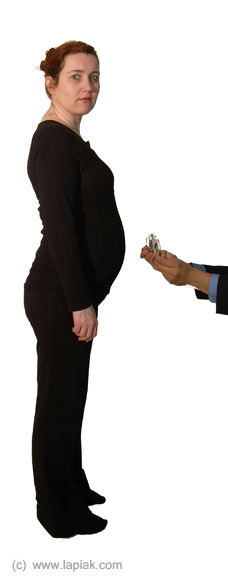
Panel 4: The image symbolizes a deterministic fate for every deaf child that she/he is doomed to practice speech and to speak another language not native to them.
Rather than practicing child-directed needs (as in the best interest of a child), deaf babies are forced to practice speech in compliance to parent-directed needs and society's expectations (in the best interest of a society). Phonobia (coined by myself) is defined as the fear of Deaf people or "deafness" itself.
Artist statement: This symbolizes a deterministic fate for every child that she/he is doomed to practice speech, not another option of modality (e.g. sign language) in a phonocentric society.